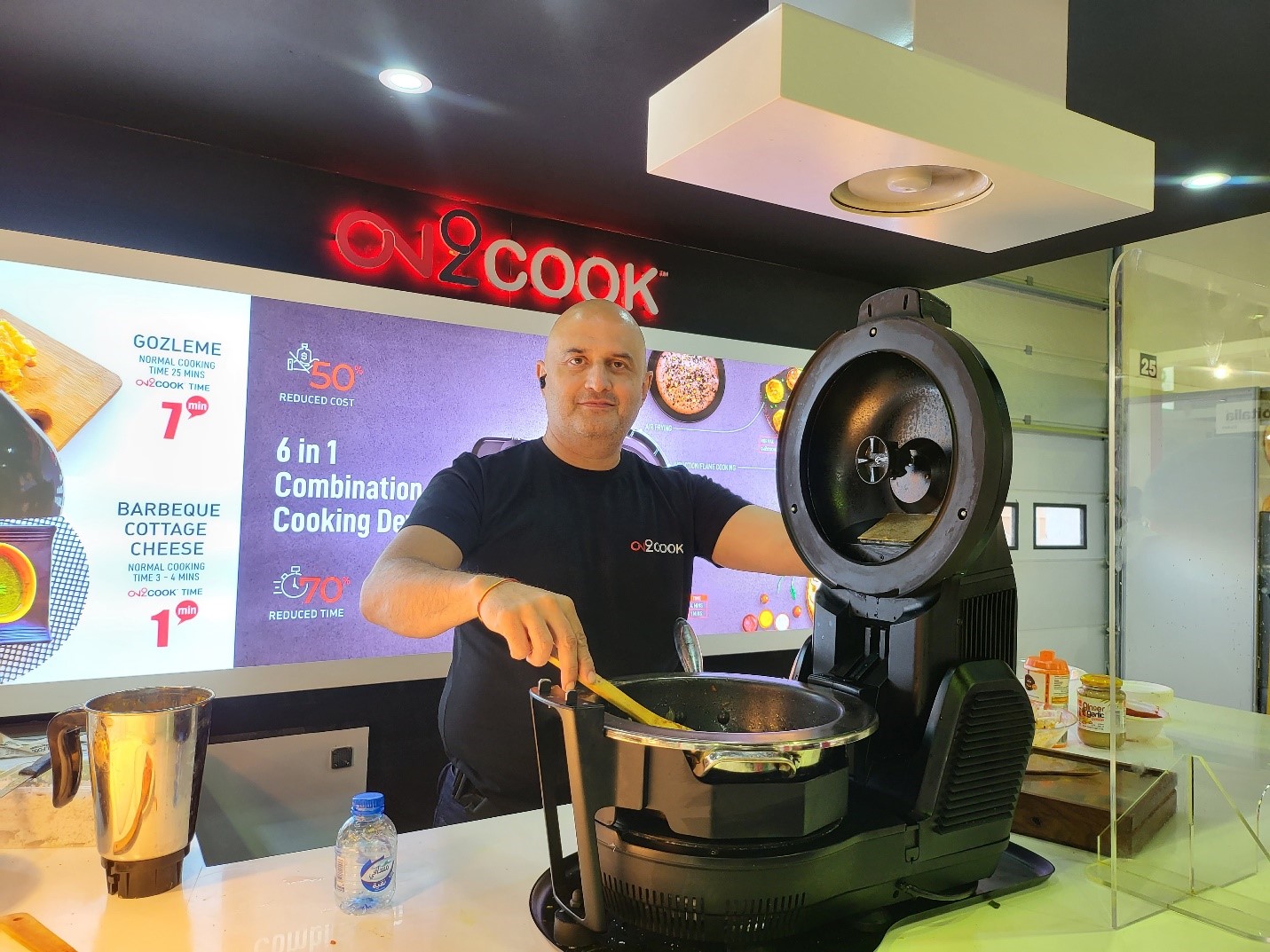In South India, one food technopreneur is combining robotics with data analytics to help food businesses stay viable amid high inflation
While the idea may sound clichéd, robot cooks have the power to revolutionize the food and beverage industry.
From churning out dishes of consistent quality at higher output rates to buffering labor shortages, robots are a growing solution to business problems faced by eateries around the world.
One food technology entrepreneur, Sanandan Sudhir of On2Cook, tells DigiconAsia.net how he is using robotics to create products to make commercial kitchen workflows better.
DigiconAsia: Can you summarize the common problems and opportunities faced by the food and beverage industry around the world?
Sanandan Sudhir (SS): There is an issue concerning the industry’s high churn rate, especially for skilled staff like chefs. They often leave after learning new skills.
- In developed countries, cooks are expensive. To save costs, many restaurants hire a skilled cook to prepare a large amount of food once or twice a week, which is then frozen and reheated for daily service. This process reduces predictability and control, leading to lower-quality food.
- More and more consumers are becoming technology savvy and they understand the options that they have available in terms of their choices for eating dining out and ordering stuff. Consumers are also becoming more and more health conscious and this can be seen in the choices that they make about what they want to eat. Healthy food choices are trending and people are willing to pay a premium for something that is deemed safe and healthy for consumption to prolong life.
- Also, there is a renewed interest in the long lost recipes, and people are looking at more authentic foods when they dine out. This trend is more visible in South India as consumers are deeply rooted in their culture and family history.
- Internationally the world has already moved from ready-to-eat meals to ready-to-cook meals. This trend is picking up in India as well.
DigiconAsia: How can food tech and robotics solve the problems and tap the opportunities while at the same time matching the taste of food cooked by humans?
SS: The integration of automation in cooking transforms the culinary landscape by taking over labor-intensive and repetitive tasks such as the softening of vegetables and meats, as well as stirring and mixing, thereby streamlining the cooking process.
However, the soul of any dish — its flavor — remains the domain of the chef or the traditional wisdom of a family matriarch. It is their unique recipes, honed over years of experience, that dictate the choice of spices and the secret combinations that infuse dishes with their distinctive aromas and tastes.

By marrying technology with these treasured culinary secrets, automation allows for the precise execution of recipes, ensuring consistency while also leaving room for the creative flair that defines gourmet cooking. The future of cooking lies in this harmonious blend of automation for efficiency and the finesse of traditional flavor profiles, making gourmet cooking accessible and enjoyable for all, with ease. The future of cooking lies in this harmonious blend of automation for efficiency and the finesse of traditional flavor profiles, making gourmet cooking accessible and enjoyable for all, with ease.
My own research into robotic “combination cooking” is guiding the creation of products that help the industry become more productive. One solution is a “combination cooker” that combines conventional heating methods such as flame or induction, with microwave cooking. This is achieved by heating the container using flame or induction from outside, and allowing the microwaves to act on the food items through the lid simultaneously. The robotics side of cooking provides big data that can be used to fine-tune the cooking automation to match how skilled cooks produce good tasting dishes.
Currently, the data is generally fragmented, and a lot of data is required to develop any significant conclusions. However, the data can eventually be used to tweak recipes, portion sizes, cooking time for various processes, etc., based on business-to-business and diner feedback. For example, portion sizes can be adjusted to help businesses sustain operations in times of increasing costs for raw materials, labor, rentals, etc.
Meanwhile, business customers such as cloud kitchen or quick-service restaurant owners are slowly adopting technology to replace skill-based cooking so that they can bring consistency and repeatability into the system. They want to scale, and want technology that can produce repeatable tastes that are easily customizable.
DigiconAsia: In your view, how will big data and analytics shape the future of food technology, particularly within the realm of combination cooking?
SS: Big data is the key. As the awareness of combination cooking increases, people are becoming creative with their foods and choices. Since cooking time is reduced to one-third for most items, and a cake can be made in just four to five minutes, cooks can explore a lot more and try new ingredients.
At the same time, our customers are wary about protecting their recipes and business secrets, so they do not always want to share much information. They just want to sell! The information we collect is now restricted to cooking patterns and not sensitive business data.
To ensure data privacy and security, our analytics perspective is more to understand broad trends about demographics, eating and buying trends, and health trends to predict the future and guide in our robotics products and solution for the food and beverage industry.
DigiconAsia thanks Sudhir for sharing his insights on food tech and robotic cooking with readers.
